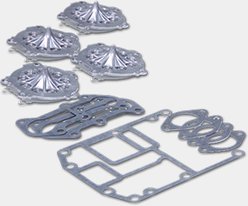Crappie have long ranked high on the list of America’s favorite freshwater game fish. Yet in recent years, the arrival of forward-facing sonar has changed the way many avid anglers target crappie. This new technology’s ability to reveal the fish and display their actions in real time has created exciting new ways to catch them.
If you’re looking for tips on using forward-facing sonar or are wondering if it’s worth adding to your boat, check out the video and the advice below.
What is Forward-Facing Sonar?
Forward-facing sonar, also called live sonar, got its name because the transducer is typically mounted to the trolling motor at the bow, where it projects a sonar signal out in front of the boat. Using the trolling motor or a specialized aftermarket transducer mount, it’s possible to aim the transducer in a particular direction. This is especially helpful for locating and catching crappie around cover.
How Does Forward-Facing Sonar Work?
Traditional 2D sonar and down-imaging sonar send a sonar signal below the boat. Side-imaging sends a sonar beam out to each side of the boat. There’s also a 360-degree sonar system that rotates to provide a look at what’s around the boat.
All these systems are effective for finding fish. The main difference between them and forward-facing sonar is that they all show a “history” of what recently passed beneath the transducer. Forward-facing sonar shows a real-time “live” look at what’s in the water within its effective range, including fish, baitfish, cover and structure.
It’s sort of like viewing a sonogram at the doctor’s office. Whatever you point the transducer toward, you’ll see, including where they are in the water column, their distance from the boat, where they move and how they react to (or ignore) your lure.
What Does a Forward-Facing Sonar Image Look Like?
In the typical forward-facing mode, your boat is at the top left corner of the screen. Numbered distance markers extend out across the screen. In most cases, the lake bottom aligns with the bottom of the screen, though you can also segment out a portion of the water column. The transducer can also be turned to “look” straight down.
Trees, rocks, brush, stumps and cane piles appear with better clarity than other forms of sonar. Fish appear as dots or, depending on the system and other factors, might appear with a much more realistic silhouette.
Why is Forward-Facing Sonar So Popular for Crappie Fishing?
There are several reasons why forward-facing sonar has captivated many crappie anglers: The speed with which you can locate fish, the ability to dial in a presentation and the fun of interacting with the fish through your screen.
Let’s say you’ve found some fish in 15 to 20 feet of water, on humps and around drop-offs. You can locate other areas that fit that pattern by driving around the lake with down-imaging and/or side-imaging to scan a broad area. Once you find more fish or cover in similar areas, you can use forward-facing sonar to scan the spot and really see what’s there. Then, you can cast out, watch your bait in real time and see how the crappie react to it. Each fish provides more clues. Perhaps they’re ignoring your lure altogether, or maybe they follow it down and then turn away. Both of those require different adjustments. You can try adjusting the lure color, line size or retrieve speed to see if that triggers a bite, or you might need to change lures entirely. And when a fish bites, you’ll see it and be ready to set the hook.
Forward-facing sonar is not a guarantee you’ll catch fish. But it is a powerful tool. Instead of casting to places where you caught them before or where you believe fish are set up, you’re able to make targeted casts and know your lure is in front of the fish. That means less wasted time and a greater ability to get dialed in – with the constant excitement of watching the action play out live on your screen.
You certainly don’t need forward-facing sonar to catch crappie, but if you do invest in the technology and learn to integrate it into your crappie fishing, you may wonder how you ever lived without it.



















